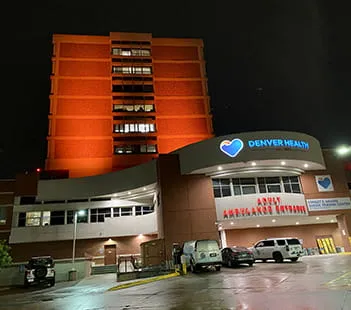June 05, 2024

On January 21, 2013, fifteen-year-old Hadiya Pendleton performed with her Chicago high school majorette squad at President Obama’s inauguration. One week later, she was shot and killed by a stray bullet at a Chicago playground. Pendleton’s childhood friends later commemorated her life by wearing orange, a color worn in the woods by hunters to protect themselves and others. In June 2015, on what would have been Pendleton’s 18th birthday, Wear Orange became a national initiative to honor Hadiya and the thousands of other Americans who have lost their lives to gun violence. National Gun Violence Awareness Day now takes place on the first Friday of June, with Wear Orange taking place over that same weekend. This year, National Gun Violence Awareness Day takes place on June 7. This June, we encourage you to honor families and communities harmed by gun violence by wearing orange, practicing safe firearm storage and engaging with local gun violence prevention organizations.
Firearm injuries are a serious public health concern, with more than 48,000 American deaths in 2022 attributed to firearms. That is equivalent to 132 people dying from firearm-related injuries each day. Injuries from firearms affect people in all stages of life. In 2022, firearm injuries were a top five leading cause of death for Americans aged 1-44 and the leading cause of death among children ages 1-19 years old. In Colorado, the rate of deaths attributed to firearms has increased by 31% from 2009 to 2018, according to the gun violence prevention organization Everytown. Firearms are the leading cause of death among children and teens in Colorado, with an average of 58 children and teens dying by guns each year, with suicide accounting for 60% of these deaths.
The consequences of firearm violence are felt by entire communities. In addition to physical injuries, survivors of firearm violence can experience chronic mental health challenges, such as post-traumatic stress disorder. Firearm incidents can affect the sense of safety and security of the communities where they take place, particularly when they occur in community spaces such as schools, shopping areas, places of worship, or community events. It is also important to note that rates of firearm injury and their associated consequences are disproportionately experienced by certain demographic groups. Teens and young adults, as well as Black, American Indian and Alaska Native, and Hispanic populations, experience the highest homicide rates associated with firearms. The highest rates of firearm suicides are experienced by adults over the age of 75, American Indian and Alaska Native, and non-Hispanic White.
This June, consider ways to address gun violence risk in your life and within your community. If you own firearms or have firearms in your house, make sure they are secured and stored safely using a safe, lockbox, or trigger lock. This plays a crucial role in preventing unauthorized access and use of firearms, including by children and those at risk of harming themselves and others. Simply putting a firearm out of sight or reach is not enough to prevent unauthorized use. If you do not own a trigger lock or firearm lockbox, contact Denver Health’s Injury Prevention Coordinator (Margaret.Rose@dhha.org) for assistance acquiring one. For more information about safe firearm storage, you can utilize the Suicide Prevention Toolkit for Safe Firearm Storage created by the Department of Veterans Affairs, the American Foundation for Suicide, and the National Shooting Sports Foundation. Additional resources are also available through Project ChildSafe, an initiative created by the National Shooting Sports Foundation that emphasizes the importance of storing firearms unloaded and locked, with ammunition stored separately.

